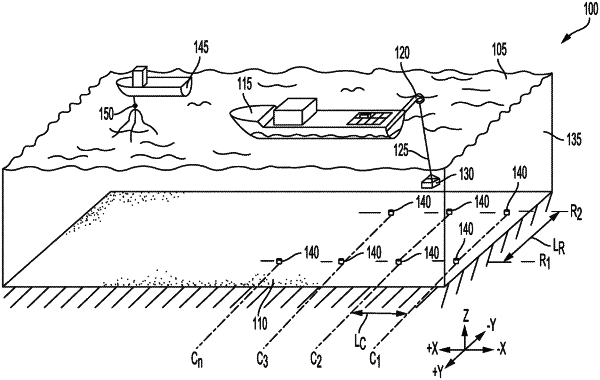| CPC G01V 1/186 (2013.01) [G01V 13/00 (2013.01)] | 20 Claims |

|
1. A system to measure hydrophone impedance, comprising:
a sensor to convert an acoustic wave received via a liquid medium into an electric signal, wherein the sensor having a first polarity terminal and a second polarity terminal having a polarity opposite of the first polarity terminal;
a signal encoder coupled with the sensor to receive the electric signal converted by the sensor;
a test signal generator coupled in series with the sensor and the signal encoder to generate a test signal to send through the sensor and the signal encoder, the test signal to measure an impedance of the sensor;
a switch component coupled in series with the sensor, the signal encoder, and the test signal generator, wherein the switch component, having a first operational state and a second operational state, is configured to:
route the test signal from the test signal generator to the first polarity terminal of the sensor, the second polarity terminal of the sensor, and to the signal encoder in response to the switch component set to the first operational state, and
route the test signal from the test signal generator to the second polarity terminal of the sensor, the first polarity terminal of the sensor, and to the signal encoder in response to the switch component set to the second operational state; and
an instrumentation component coupled with the signal encoder and the test signal generator, wherein the instrumentation component is configured to:
measure a first impedance of the sensor using the test signal and a first resultant signal outputted by the signal encoder in response to the test signal during the first operational state; and
measure a second impedance of the sensor using the test signal and a second resultant signal outputted by the signal encoder in response to the test signal during the second operational state.
|